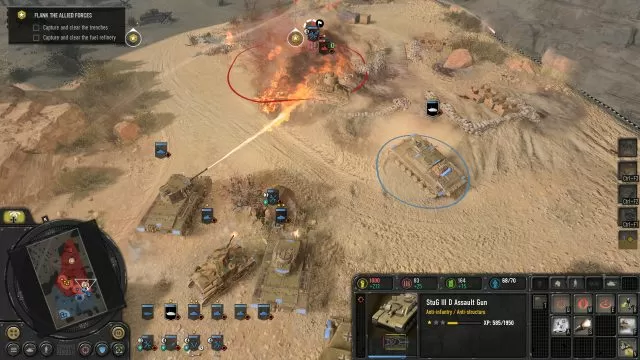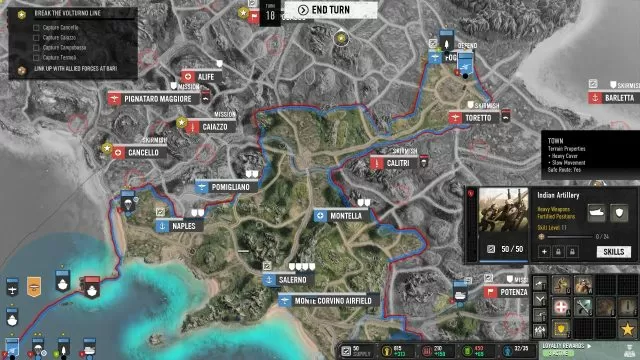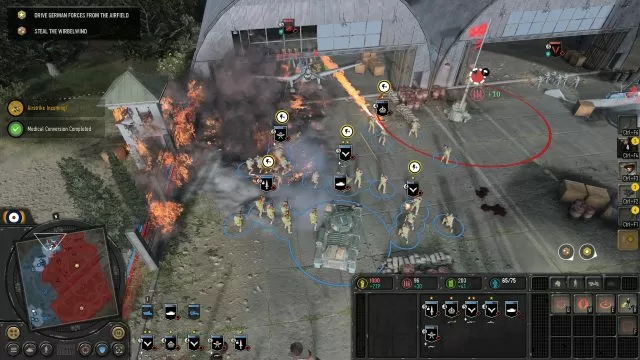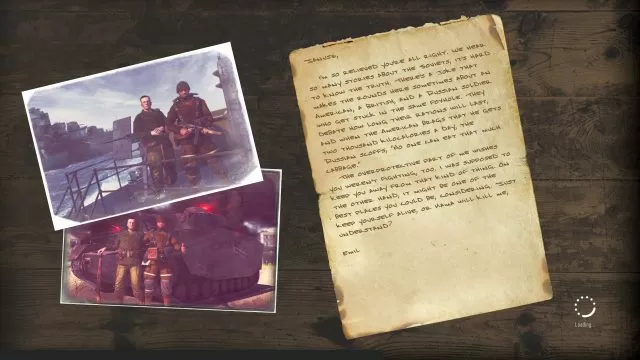Company of Heroes 3 Review – Road To Rome
It has been roughly a decade since Company of Heroes 2. The real-time strategy genre didn’t exactly thrive back then, but now it’s objectively dead. Some people can’t let it go, though. Its corpse is still being animated by determined Koreans unwilling to give up on StarCraft. Ubisoft recently attempted to rekindle the flame with Settlers: New Allies, hybridized city builder/warfare RTS, but it flopped mightily. To succeed in the RTS space, a strong legacy and a big budget are not enough. You might also need to enlist the help of 101. Airborne division.
Relic Entertainment is the master in the ancient skill of beating the dead horse until it can pull the load again. In the Company of Heroes case, that’s a two-headed horse, as both World War II and RTS are completely passé in 2023. For horse necromancy to succeed, Relic employed a few clever tricks. Instead of Normandy or Stalingrad, they went south, to Africa and Italy, exciting and underused theatres. The second horse, the RTS one, was jolted to life by intertwining it with the turn-based campaign. The result is interesting but flawed.
The End Of The Beginning

Company of Heroes 3 has two single-player campaigns. Main event is the allied invasion of Italy, presented in a turn-based mode similar (at first sight) to Total War games. The second one is the prequel campaign in which you’ll be controlling Romel’s Africa Corps in a classic, linear fashion, though eight fixed missions. The game also offers robust multiplayer, AI skirmish, and modding support out of the box (do people still buy boxed PC games?).
Deutsches Afrikakorps, or DAK, was the Wehrmacht expeditionary force, sent by Hitler to north Africa to rescue Mussolini’s battered army. Led by Erwin Rommel, it proved very successful, managing to massively surpass its initial operational goals. Not only did DAK stabilize the front, but it also succeeded in driving the British forces all the way to Egypt, seizing Tobruk as well as the rest of the coast. It took the combined might of US invasion forces and Brits to finally defeat it. Through the campaign, you will be repeating that conquest up to the battle of El Alamein, which signified the beginning of the end for Rommel and DAK. It was, as Churchill would say, “The end of the beginning” of WWII.
Non-Linear Campaign Is A Dud

Allied invasion of the Italian mainland is the meat and bones of Company of Heroes 3. Instead of a scripted, linear campaign, you have the freedom to maneuver and pick the targets. The conquest of the territory, coastal and inland cities seems non-linear at first, but the campaign has several key junctions that must be completed to advance. Simply put, campaigns present you with a non-linear trek to fixed objectives (missions) you must complete. The road to Rome leads through Naples and Anzio.
Unfortunately, the opponent is completely passive. Save for limited local counter-attacks, Wehrmacht will never attempt to retake the liberated cities in a non-scripted fashion. Germans will mostly just sit there, manning the lines and waiting for sweet obliteration. Compare that with the brutal dynamism of any Total War game and you’ll realize how utterly devoid of challenge CoH3 really is. Succeeding in this game requires only patience to slog through Italian boot, heading north and conquering one city after another.
Apart from the freedom to acquire the divisions you desire, the campaign is flavored with some non-consequential RPG elements. Chief among them is the reputation system with American and British generals, as well as with the leader of Italian partisans. By selecting the dialogue choices they favor, which leads to different optional objectives, you will raise your standing with them. Some actions also bolster or lower it. For example, bombarding cities for faster conquest has a detrimental effect on relations with partisans. The higher relations tier unlocks different bonuses, nice to have but never crucial.
Tactical Battles For The Win

The best thing about Company of Heroes is the superb tactical battle module. There are four factions this time – Wehrmacht, DAK, US forces, and British forces. Deutsches Afrikakorps is, of course, the most exciting of them all. This mechanized force is all about speed and aggression, with a strong emphasis on recovering damaged vehicles in the field. DAK also fields elite Italian infantry units such as Bersaglieri and Guastatori, but (for now) lacks their famous anti-tank units Rommel favored above all else.
The biggest new thing in RTS battles is a tactical pause. In any single-player mission, you can press the space bar and queue the actions for each unit. It can bring order to chaos, especially for players new to RTS. The system of environmental destruction is also greatly visually enhanced. You can see the individual bricks when the artillery barrage hits the building. Maps are prettier in general, compared to the previous game – picturesque Italian countryside exists in sharp contrast to the bleakness of Eastern Front.
American Exceptionalism And Other Blunders

You’d have to be pretty daft not to spot the ugly trend of American exceptionalism in Company of Heroes as a whole. It’s anything but subtle at times. Only the US troops and brass are cool and reasonable, everyone else is flawed to some extent. In the Italian campaign, British general Norton is a wanton coward who always urges a low and slow approach, while his US counterpart gen. Buckram is a brave trailblazer. In the DAK operation, Romel is an unhinged, careless risk-taker who pushes his men to the point of absurdity. Stupid it may be, it all pales in comparison to the insulting portrayal of the Red Army in Company of Heroes 2, led by NKVD commissar instead of STAVKA for some reason. This weird trend casts a shadow over all the good technical things Relic Entertainment achieved with CoH over the years.
Apart from an underwhelming non-linear campaign and aforementioned exceptionalism, Company of Heroes suffers from some nasty bugs. For example, in Anzio mission, the game failed to trigger the winning condition as the final territory got captured by an AI ally. So, that was 45 mins down the drain as I had to restart the mission. The balance is also way off in some respects. Combat engineers equipped with flamethrowers can rout or kill all other infantry units with ease, often multiple squads at the same time.
Despite the flaws, Company of Heroes 3 can offer a satisfying experience, especially if you plan long-term engagement in multiplayer. Support for mods will also ensure its longevity. And finally, it’s not like you can pick and choose between many high-profile RTS games nowadays.
Highs
- Real-time battles are superb as ever.
- More detailed environmental destruction system.
- Mod support since day 1.
Lows
- Non-linear campaign offers absolutely no challenge.
- Flamethrowers are WAY overpowered.
- American exceptionalism is super annoying and disrespectful.

